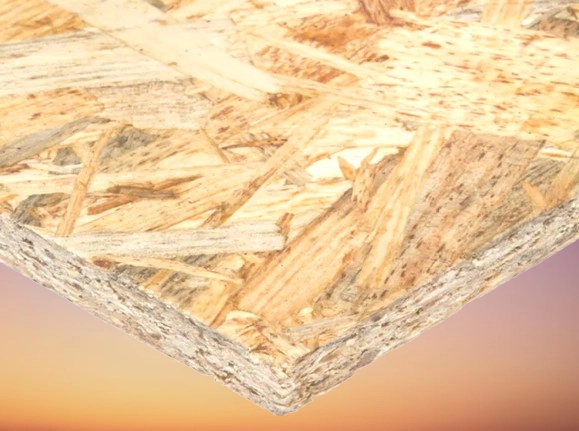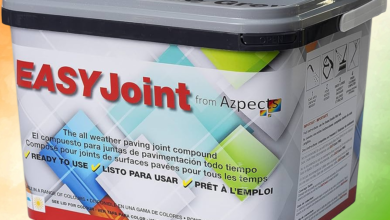Can DITRA Be Installed Over OSB?

Since 1963, OSB boards have been in use. Therefore, don’t be shocked if your home’s subfloor is made of this material.
Oriented Strand Board, or OSB, is composed of multiple layers of wood strands joined by adhesives. OSB may appear delicate at first glance. However, because of its strength, it is frequently utilized on flooring.
OSB comes in a variety of forms, ranging from OSB1 to OSB3. For load-bearing and structural applications like floors, the latter is perfect.
Conversely, DITRA is an uncoupling membrane that is employed in tile installation. The open rib structure of DITRA, a waterproof underlayment, counteracts movement in a load-bearing substrate like an OSB floor.
The uncoupling characteristics of DITRA reduce substrate stress, which could lead to tile and grout cracking. For tile installation on substrates deemed unsuitable, DITRA provides a shortcut.
Can DITRA Be Installed Over OSB?
The installation of DITRA over the OSB floor is a simple response to the aforementioned query.DITRA’s maker, Schluter, advises using it instead of OSB and plywood.
Therefore, installing DITRA via OSB is safe. In addition to Schluter’s advice, a number of professionals have installed tiles over OSB using DITRA as an uncoupling membrane.
Upon reviewing the list of suggested tile substrates, OSB is not mentioned. The most common materials these days are cement boards and concrete, to which tiles are ideally suited.
What choices are available to those with OSB floors who wish to install tiles, given that tiles should only be placed on cement boards? The DITRA uncoupling membrane fills that gap.
OSB is still a wood product even though it differs slightly from plywood. This implies that when it comes into contact with moisture or water, it will expand and contract.
It is never advisable to lay tiles on a substrate that extends or compresses. The grout and tiles crack as a result of this movement.
An OSB floor will benefit from a DITRA uncoupling membrane in the following ways:
- DITRA’s uncoupling capabilities will stop the OSB’s stress from moving when it expands or contracts, which could lead to tile and grout cracking.
- DITRA will guard against water damage to OSB. notwithstanding OSB3’s suitability for use in humid environments. It is nevertheless susceptible to the negative effects of prolonged exposure to dampness. By employing DITRA’s waterproofing capabilities, that might be lessened.
- DITRA will facilitate load dispersion as well. For OSB boards that are used as floors, this is crucial.
In addition to the fact that DITRA is safe to install over OSB flooring, combining these two building materials offers other advantages. Additionally, don’t overlook DITRA’s easiness for tile installation projects.
The OSB floor would have to be taken out and replaced with cement planks in the absence of DITRA. One that would take a great deal of time and money.
How Can DITRA Be Installed Over OSB?
It’s time to learn how to use DITRA over OSB now that you know it can be done. A brief tutorial on installing DITRA over OSB may be found below.
- Step 1: Clean up the OSB floor.
Cleaning the OSB floor is the first and most noticeable procedure. Dust and grime are included in this. For that task, a vacuum can be used. Wipe the floor with a damp sponge to make sure it’s clean.
- Step 2: Cut the DITRA into smaller pieces.
Make sure the DITRA fits precisely by measuring and cutting it on the spotless OSB floor. Pre-cutting before installation is essential because it will simplify your task.
All you need to cut the DITRA uncoupling membrane is a pair of scissors. Make sure the parts are large enough to accommodate the OSB subfloor in their entirety.
- Step 3: Mixing the Thinset
The thinset will facilitate the DITRA’s adhesion to the OSB. Now is the moment to get messy. Before you begin, you should be aware that modified thinset mortar is the best option if you are working on OSB.
To prevent catastrophes, it is imperative to utilize the products that are advised. Add water to the thinset until the consistency you want is achieved. It shouldn’t be excessively thick or thin.
- Step 4: Install the Modified Thinset with Your Trowel
A V-notched trowel is what you should look for while assembling the items for this project. I’ll explain the benefits of using the V-notch trowel. Schluter suggests a range of sizes. It will be much simpler to install if you choose the one with which you are most comfortable.
Work the thinset on the OSB floor with the trowel’s flat side. Please turn it to the V-notched side and trowel it until the surface has grooves visible. Partition the workspace into separate sections to prevent the thinset from drying out.
- Step 5: Installing the DITRA over the thinset
The DITRA can now be placed on top of the thinset. Using a rubber float can greatly simplify your work. The DITRA can be worked into the thinset using one.
Continue until you are certain that the DITRA has stuck to the thinset. To monitor the development, you can raise one of the edges a little. Regarding the seams, Kerdi Band might be used to seal them.
After that, you can use the thinset to allow the DITRA to cure on the OSB, and the installation process will be complete.
Where Is It Better to Install DITRA Over OSB?
In locations where you want to tile, DITRA should be applied over OSB floors. DITRA is ideal for surfaces that are going to be tiled over because of the advantages listed above.
If so, DITRA can be used in showers and kitchens with OSB flooring. DITRA is not required if you plan to install an other kind of floor, such hardwood.
Will OSB absorb moisture from the DITRA installation mortar?
OSB boards have the ability to absorb moisture well. You might worry if the OSB won’t absorb moisture from the mortar used for the DITRA installation.
The OSB board will definitely absorb some moisture from the thinset mortar. The good news is that it will only suck a small bit, meaning that neither the OSB nor DITRA’s adherence will be impacted. This is due to the thinset’s rapid curing after application.
We said that you should mix up the thinset so that it’s not too thick or thin when we were talking about how to put DITRA over OSB.
You won’t have to be concerned about OSB absorbing the modified thinset mortar if you use it to a uniform thickness. There’s no need to worry about this.
Willn’t DITRA Increase the OSB Floor’s Height?
When applying a solution like DITRA over OSB, there are many potential issues. For example, you might wonder if DITRA will make the OSB floor higher. If it does, it may make things more difficult, like opening doors.
The thickness of DITRA is 1/8″. It is rather thin. As a result, it won’t actually lift the OSB floor that much.
Alternatives to DITRA That Are Usable on the OSB Floor
Over an OSB floor, a variety of goods can be utilized. Depending on what you plan to install over the OSB subfloor, these options are relevant. Among the choices you might think about are
- Kerdi: When installing tiles, this waterproofing membrane serves as a vapor retardant. Please be aware that it lacks the DITRA uncoupling features.
- RedGard: RedGard is a great substitute for people who are concerned about DITRA raising the floor height. The nicest thing about it is that it is a liquid-applied waterproofing membrane, which makes it perfect for tile installation.

